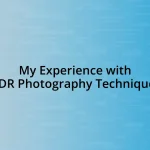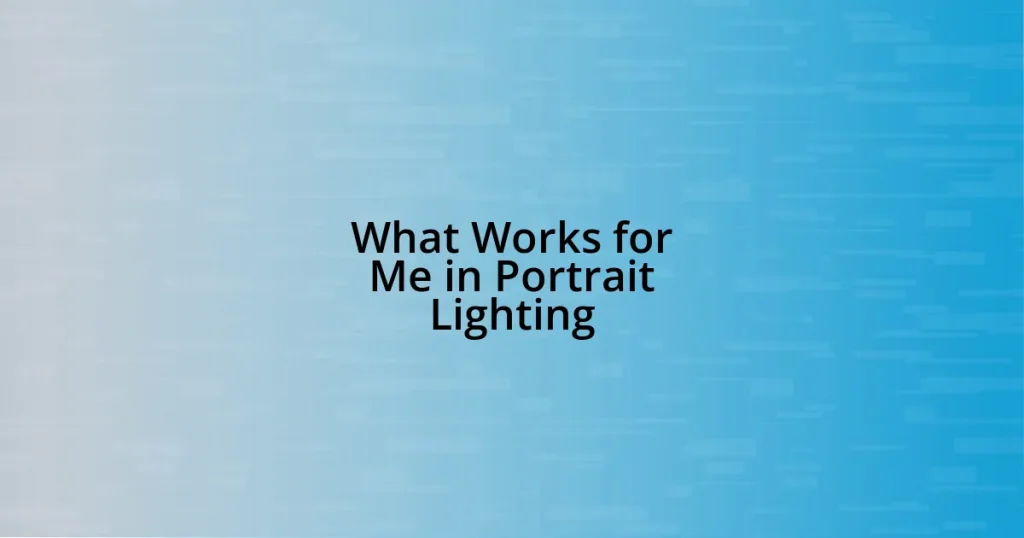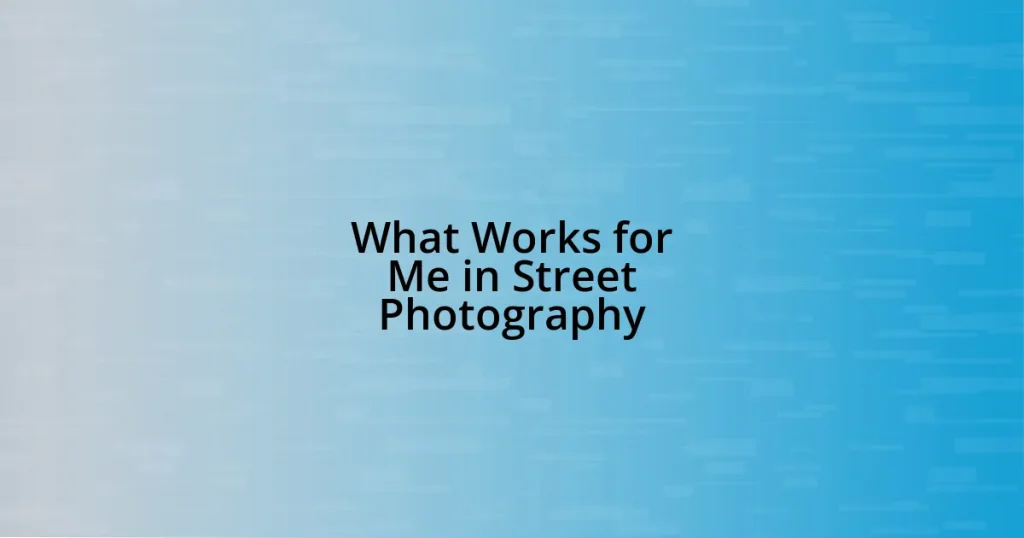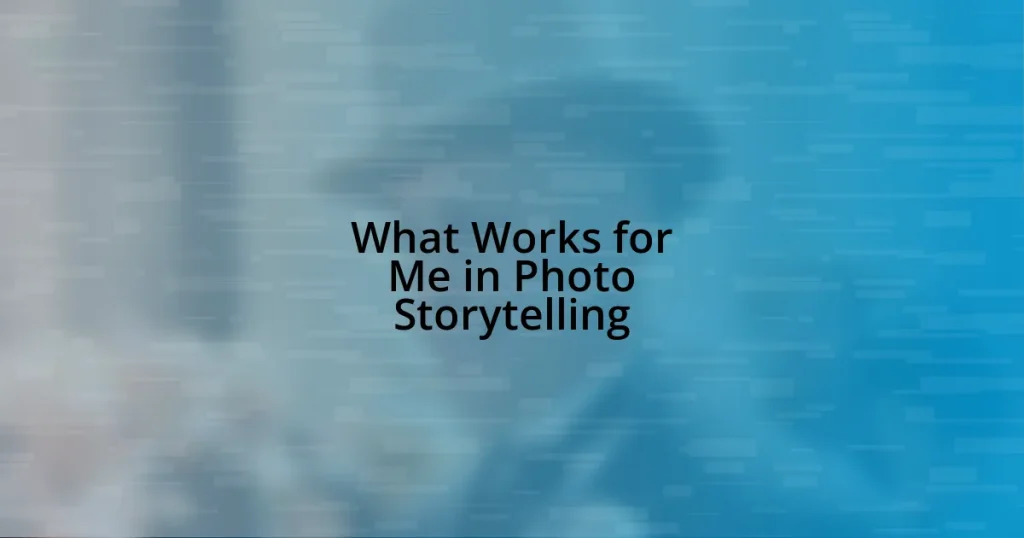Key takeaways:
- Using a gray card and the Kelvin scale can significantly improve white balance, resulting in accurate and vibrant colors.
- Accurate white balance enhances mood and realism in photos, saving time in post-production and elevating overall quality.
- Adjusting white balance settings according to different lighting conditions is crucial for capturing the desired mood and feel of a scene.
- Common mistakes include relying too heavily on automatic settings and not experimenting with custom adjustments, which can lead to uninspiring results.

Understanding White Balance Techniques
White balance techniques are like the unsung heroes in photography; they often go unnoticed until you see the difference they can make. I remember my first attempts at capturing sunsets—those vibrant hues often turned into muddy browns when my white balance settings were off. It was a painful learning process, but every misstep taught me the value of adjusting settings to match the lighting conditions.
One method I often rely on is using a gray card. Have you ever held one up before snapping a shot? It sounds simple, but that sheet of gray can be a game changer in achieving accurate colors. I was amazed the first time I got it right; it felt like unlocking a secret only known to seasoned photographers. The subtle shades of sunset became lively oranges and pinks instead of dull grays, and I felt a thrill from nailing that perfect shot.
Another technique is the Kelvin scale, where you can manually set the temperature of your light. At first, I was intimidated by the numbers—who wants to do math while shooting? But once I embraced it, I found immense creative freedom. Now, when I want a warmer glow for an evening shot, I simply dial up the Kelvin. Do you see how this technique allows you to manipulate the mood of your image? It feels empowering!

Importance of Accurate White Balance
Accurate white balance is crucial for capturing the true essence of a scene. I recall a trip to the mountains where the late afternoon sun bathed everything in golden light. When I reviewed my photos later, I was disheartened to see that warm glow replaced by cold blues due to my white balance being off. It not only altered the mood but also made the stunning landscape look flat and lifeless.
Moreover, getting white balance right can elevate your photography, giving it that professional touch. During a wedding shoot, I experimented with the settings throughout different venues. One moment, I adjusted the white balance to match the soft indoor lighting, resulting in photos that exuded a romantic warmth. Those images stood out so much more than when I was inconsistent—there’s a noticeable shift in viewer engagement when the colors harmonize naturally.
The difference between accurate and inaccurate white balance can also impact editing time. I remember spending hours correcting colors in post-production, often feeling frustrated and drained. Now, with practiced attention to white balance, I save myself that hassle. It’s akin to a painter choosing the right colors for a canvas; when everything aligns, the end result is a masterpiece.
| Accurate White Balance | Inaccurate White Balance |
|---|---|
| Enhances mood and realism | Tends to distort colors and emotions |
| Saves time in post-production | Increases post-editing time and frustration |
| Creates professional, vivid images | Leads to dull and lifeless photos |

Tools for Achieving White Balance
Finding the right tools for achieving perfect white balance can profoundly enhance your photography experience. I’ve relied heavily on a couple of essential items that I can’t recommend enough. For instance, investing in a good quality gray card has been a revelation. I remember my first shoot after using one—I felt a sense of assurance as I captured the colors of autumn leaves, knowing I was offsetting the warm hues perfectly. Additionally, a color checker passport has served me well, ensuring consistency across different lighting conditions.
Here’s a quick list of tools that can help you master white balance:
- Gray Card: Ideal for setting a reference point for true colors.
- Color Checker Passport: Offers a comprehensive reference for both white balance and colors.
- Light Meter: Measures light and helps in determining the right settings.
- Kelvin Scale on Camera: Allows precise temperature adjustments for various lighting.
- White Balance App: Handy for quick checks when you’re on the go.
Using these tools can transform how you approach each shot. In my experience, they bring not just accuracy but also a deeper connection to what you’re creating. When I take a moment to really engage with these tools, I often find photography becomes not just a task but an art form.

Settings for Different Lighting Conditions
When shooting in different lighting conditions, I often find myself adjusting settings to capture the perfect mood. In bright daylight, I tend to use a cooler white balance setting, often around 5500K to 6500K, which helps to counteract the harsh sunlight. I remember one sunny afternoon at the beach when I set my camera to daylight mode—it made the sky and water appear vibrant without any unpleasant yellows creeping in.
On overcast days, I prefer to warm things up a bit, usually setting my white balance around 6000K. When I did this during a foggy morning walk, the slight warmth added a touch of coziness to the misty ambiance. It almost felt like the sun was gently peeking through the clouds, and I could almost hear the waves whispering around me. Isn’t it fascinating how just a small shift in settings can evoke such strong emotions?
For indoor photography, particularly with mixed lighting, I’ve found that manually adjusting the white balance to match the predominant light source is crucial. One evening, I was at a friend’s dinner party where several lamps cast different tones across the room. I took a moment to balance my settings and captured moments that felt warm and inviting without the harsh shadows that often ruin the vibe. That night, I learned that understanding the nuances of different light can turn an ordinary shot into something truly special.

Post-Processing White Balance Adjustments
In my post-processing workflow, adjusting white balance is a game changer. Using software like Adobe Lightroom or Photoshop, I’ve taken images that once felt dull and lifeless and transformed them into vibrant pieces that truly reflect the moment. I recall spending hours on a sunset shot, tweaking the sliders until the warm oranges and deep blues transported me back to that evening, feeling the soft breeze again.
It’s fascinating how small adjustments can lead to significant differences. Sometimes I find myself playing with the temperature and tint sliders, and each trial reveals subtle nuances in how the colors interact. One time, during a family gathering, I adjusted an indoor photo that originally seemed overly cool; warming it up brought smiles back to those faces—it was like flipping a switch on their emotions! Have you ever experienced that moment when a simple change opens a window to the beauty of the scene you captured?
I also like to use the eyedropper tool to target something neutral in the image. It’s always surprising how it can instantly elevate the photo. I remember working on a snowy landscape—initially, it felt washed out and uninviting. Once I clicked on a patch of snow, the whole scene brightened, drawing me back to that crisp winter day. It made me realize just how pivotal post-processing is in breathing life into our photos, transforming them from mere captures into memorable experiences. Are you ready to give this a try?

Common Mistakes in White Balance
It’s easy to overlook the importance of setting white balance correctly, especially when relying solely on automatic settings. I remember being in a beautifully lit art gallery where I let the camera decide. The results? A series of images that made the vibrant colors look dull and lifeless. It was a big wake-up call—trusting your camera’s automatic settings can sometimes lead to disappointing results, missing out on the true essence of the scene.
Overexposing images while adjusting white balance is another common pitfall. Once, during a sunset, I thought dialing down my exposure would help balance the warm glow. Instead, I lost detail in the highlights, turning the vivid colors into a washed-out mess. Have you ever had a moment like that? It’s frustrating to see stunning colors fade into oblivion just because of a minor tweak gone wrong.
Another mistake I see often is not experimenting enough with custom white balance settings. I learned this firsthand while photographing a wedding reception lit by a mix of string lights and candles. Initially, I stuck with auto white balance, which produced muddy, inconsistent tones. But when I took a moment to manually adjust the settings to match the warm ambiance, the images transformed. They radiated a romantic warmth that truly reflected the evening’s spirit. Why not take a chance on manual settings next time? You might just capture something extraordinary.
















